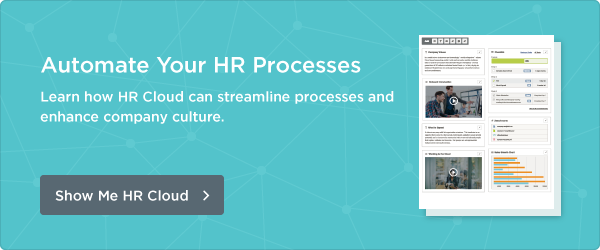Let Us Help You Engage Your Employees!
Onboard New Hires Safely, Efficiently, and Effectively.
Are You Interested in Improving Your HR Organization?
Your company culture may be the best branding tool you have. This is not the glossy ‘photo shoot’ ready version of what you want to show to the world but rather the true, authentic glimpse of what really goes on behind closed doors. After all, the culture you have inside your organization directly impacts the external reputation and viewpoint that those outside of the company have of your organization. It’s special, unique and belongs only to you.
Much as “consumer” brands must pay attention to marketing initiatives in separate and distinct markets, so too must employer brands. There are numerous examples of when this has not been done and companies have experienced difficulties upon expansion into new markets. One of the most well known missteps was Disney’s opening of Euro Disney now known as Disneyland Paris.
One of the major reasons attributed to the launch failure was Disney’s reluctance to “localize” the experience due to their corporate insistence to maintain consistency across all markets and parks. This resulted in Euro Disney offering standardized merchandise and food, requiring English-only to be spoken in staff meetings, and (the horror!) not allowing wine consumption in the park. The park opened to the public in March 1992 and by May of that year it was reported that 25% of Euro Disney’s workforce (3,000) employees had resigned from their jobs due to unacceptable working conditions (although Disney Executives later responded and claimed the number was closer to 1,000 employees).
Disney also learned some important messaging lessons. Michael Eisner, the former CEO of Disney, stated in 2002, “As Americans, the word ‘Euro’ is believed to mean glamorous or exciting. For Europeans it turned out to be a term they associated with business, currency, and commerce. Renaming the park ‘Disneyland Paris’ was a way of identifying it with one of the most romantic and exciting cities in the world.”
Poor Disney; they disregarded the importance of glocalizing.
Glocalization, a term that first appeared in the late 1980s and credited to sociologist Roland Robertson, refers to the concept of combining globalization with local consideration in areas related to production or consumption when integrating local markets into world/global capitalism. The understanding of this has further evolved and we now understand this does not just refer to economic processes but also the degree to which individuals in local markets have different interests, customs, religious viewpoints, or levels of activism. While there may be some shared or common frames of references in different geographic areas it’s still important to be aware of the unique attributes that differentiate one locality from another.
There are certainly HR and recruiting teams that realize this. Successful global talent acquisition teams that recruit talent across global regions (EMEA, Americas, APAC) spend considerable amounts of time understanding the cultural differences in regards to employee/employer status or the importance of individualism versus collectivism.
Naturally though, not every organization has a multi-national presence or possesses the need to recruit talent in another part of the world. There is a need, however, for employers of all sizes to understand how local differentiation of one’s organizational culture can more effectively resonate in various markets. So how can the business entity that operates regionally or has offices located only in one US state apply some of these glocalization concepts?
Tweet: 3 glocalization strategies HR can use right now @HRCloud
1. Build a strong local employment brand. Identify what employees and candidates are passionate about in each individual market. Your company headquarters might be located in Gainesville, Florida (home of the University of Florida and the Gator football team) but at your office in Tuscaloosa, Alabama the company had better be prepared to demonstrate support for the Crimson Tide. You can work with employees to co-create this unique local brand by allowing them to share stories and suggest ways in which you can connect the fiber of your brand to the local community. Consider using technology tools and platforms that involve employees and encourage interaction thus allowing you to organically co-create this distinct local version of your larger culture brand.
2. Build a locally relevant work environment. While your work environment may be designed around a consistent model there are certain things that may not work from site to site. The dress code that is de rigeur in your Chicago office (jackets and ties for men, skirts and hose for women) may be viewed as unrealistic by your staff in New Orleans as they swelter through steamy, swampy days from May through October. Building architecture, cubicles vs. private offices, or open workspace vs. compartmentalized departments, may all be dictated by local preference. These environmental elements are a manifestation of your corporate culture but local norms may require that you explore what they indicate to your workforce in a specific market.
3. Define the value proposition that works in each market. It’s important to understand the critical business needs you have in each market particularly when looking at this from a talent attraction and retention standpoint. Perhaps you need to ensure your employer/culture brand attracts young professionals and appeals to their career aspirations. Maybe workplace flexibility is more important to employees or candidates in one market than in another.
In a city where commuting times are notoriously lengthy, for example, a higher percentage of employees or candidates may place greater value on flexible hours or work from home programs. Having clarity on what’s meaningful will assist you in creating a compelling message about employees’ rewards and benefits and allow you to communicate how that ‘value’ aligns with your culture.
The ultimate take-away from this is that neither one size, nor one message, fits all. Make sure that you understand what your employees, and candidates, in each locale consider important. Explore how those expectations fit with your company culture and determine how best to share that message with both current employees and potential candidates.
When you empower your local teams and ensure they have the freedom to create and share unique branding and messaging campaigns that highlight their local market distinctiveness you can chalk up some WINS in the talent attraction, engagement, and retention categories on the HR scorecard.
Keep Reading
Workforce Management through Tech-Based Tools: Streamlining Construction and Roofing Operations
As industries evolve, adopting innovative approaches to workforce management is essential
Skills vs Abilities in the Workplace
Modern-day workplaces are facing many challenges that were not foreseeable a few years







